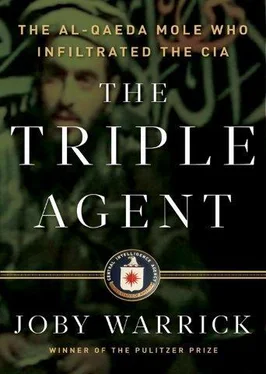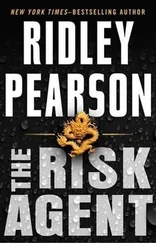The darkest moment came on January 4, 2002. After a meeting with elders in a nearby village, a gun-toting Afghan suddenly opened fire on the Khost team. One of the CIA paramilitary officers collapsed, struck by a bullet that pierced his chest through a gap in his body armor. Also hit was an energetic Green Beret sergeant named Nathan Chapman, a communications specialist and Desert Storm veteran who had been detailed to the CIA team at Khost. Chapman, thirty-one, had been shot through his thigh, and his wound was deemed less serious than that of the CIA officer.
Within minutes the two wounded men were in the air on their way back to Khost, where the CIA officer with the chest wound was eventually stabilized. Chapman meanwhile was rapidly losing blood from what turned out to be a severed femoral artery. By the time the helicopter touched down in Khost, the young soldier was dead. He was the first American GI from any service to die in combat in Afghanistan.
Soon afterward the CIA moved its headquarters to the grounds of the airfield outside town. Though abandoned for years, it offered ample space for sleeping and working, including a fully intact control tower with a roof that provided sweeping fields of fire for a machine gunner. The runway was salvageable, if littered with broken and bombed-out aircraft from the time of the Soviet occupation. The Americans got to work shoveling dirt into HESCO barriers to begin the fortification of what was to become the first CIA base in Afghanistan outside Kabul.
Someone suggested a name for the new facility: Forward Operating Base Chapman, after the Special Forces officer killed a few days earlier. It became the official name for the base, though most of the CIA inhabitants referred to it by its shorter handle, Khost.
The first order of business was deciding how to deal with the region’s largest militant group. Local warlord Jalaluddin Haqqani had spent years on the CIA’s payroll when he served as an Afghan rebel commander during the war against the Soviets, and he now controlled thousands of fighters along the Afghanistan-Pakistan border. He had nominally allied himself with the Taliban after that group’s rise to power in the 1990s. But Haqqani was a free agent, more interested in perpetuating his own smuggling empire and protection rackets than in theology or conquest.
Haqqani also was loyal to his friends, including his former comrade-in-arms Osama bin Laden. The two men had cemented their reputations in the 1980s fighting the Soviets in the mountains around Khost, a region that repeatedly proved impervious to Russian assaults. Bin Laden, the son of a wealthy construction magnate, used Saudi money and engineering connections to help the mujahideen guerrillas build a complex of tunnels and cave fortresses in the hills. Haqqani became a legendary military commander, personally leading his fighters into improbable David and Goliath victories against Soviet commandos and helicopter gunships. The Soviets occupied and expanded the airfield at Khost mainly in a failed attempt to bomb Haqqani and his allies out of their mountain redoubts.
Thus, when SAD teams and pro-U.S. Afghan forces closed in on bin Laden in late 2001, the al-Qaeda leader sought the protection of the tall, bushy-bearded warlord who had fought with him against the Soviets. Haqqani offered his friend sanctuary in a house outside Khost until it was safe to cross back into Pakistan to rejoin his followers.
Haqqani remained behind. He had been sanguine about the Taliban’s defeat and was prepared to switch loyalties, as he had done so often in the past. Pakistani officials who had dealt with him for decades strongly urged the Americans to accommodate him and perhaps even give him a token role in the new Afghan government.
But in Washington, Bush officials in the Defense Department were not in a mood to bargain. Haqqani had abetted the escape of Osama bin Laden and might still know his whereabouts. Two rounds of secret talks were held with Haqqani’s emissaries, in Islamabad and then in the United Arab Emirates, according to a former senior U.S. official intimately familiar with the events. But at both meetings, the official said, the U.S. side offered the same terms: unconditional surrender, including Haqqani’s personal acquiescence to donning an orange jumpsuit and joining the other detainees at the newly opened U.S. prison camp at Guantánamo Bay, Cuba. After a reasonable interval—presumably after Haqqani had told military interrogators everything he knew about bin Laden—he would be allowed to return home.
Haqqani’s refusal to accept such an offer was a given, the former intelligence official said.
“I personally always believed that Haqqani was someone we could have worked with,” the official said. “But at that time, no one was looking over the horizon, to where we might be in five years. For the policy folks, it was just ‘screw these little brown people.’ ”
Haqqani did refuse. Jalaluddin Haqqani had bedeviled the Russians over nearly a decade of guerrilla warfare in the 1980s. Now, at age fifty-one, he would go to war against the Americans. In time the so-called Haqqani network, led by Haqqani’s son Sirajuddin, became one of the greatest threats to U.S. forces in all of Afghanistan, and it was Haqqani’s fighters who now woke Matthews and her colleagues at all hours, firing rockets at the walls of the base at Khost.
In the years that followed bin Laden’s escape, some CIA paramilitary teams continued to operate as before, working out of small compounds where they lived and fought alongside Afghan soldiers. But the old SAD base at Khost expanded, bulked up, and assumed new responsibilities, mostly in support of Pentagon objectives. The hunt for Osama bin Laden shifted to Pakistan and relied largely on robot planes. And for the first time CIA reports officers, targeters, and analysts from Langley were routinely deployed to frontline bases to help with the collection and interpretation of intelligence, mingling with and sometimes directing the men with the guns.
Langley embarked on a program of cross-training for the two very different types of officers. SAD officers were drilled in classic intelligence-gathering techniques, while Afghanistan-bound civilian officers were required to take a three-week “overseas preparation course” to learn basic war zone survival. In the latter program, officers worked on their shooting skills, learned battlefield first aid, and practiced driving through roadblocks and ambushes. It was a start, but even some of the trainers acknowledged the program’s inadequacy.
“It’s just rudimentary, baseline, box-checking training,” said one career officer who taught one of the courses. “It’s familiarization, as opposed to proficiency.”
A decade earlier the same course had lasted twenty-one weeks and included extensive instruction on bombs and explosives, as well as lessons in team building, navigation, and even parachuting. But the longer program was dropped because it was judged to be expensive and time-consuming for an agency that needed to deploy operatives to the field quickly. Some of the skills taught in the longer course—parachuting, for example—were deemed irrelevant in an age in which so much of the business of spying depends on computer networks, satellites, and robotics.
“After September 11, the question was asked, ‘Do we need to teach these hard skill sets to everyone?’ And the answer was no,” said the retired officer who taught the overseas course. “You can simply subcontract those parts of the job to others.” The hard skill sets were the special domain of the soldiers and the paramilitary elites. The “meat eaters,” as some called themselves, were still needed at Khost. But they would no longer be in charge.
In the command center at Khost, with Baitullah Mehsud now confirmed dead, Matthews could focus her attention on the mission she had always regarded as the highest priority: locating and killing bin Laden, along with his deputy, Ayman al-Zawahiri, and their senior commanders.
Читать дальше












